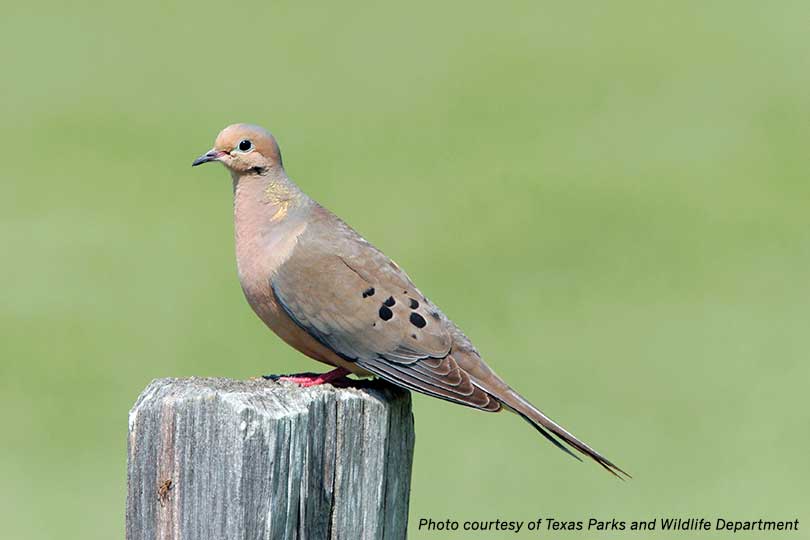This is the time of year to start planting food plots for dove hunting.
Food plots should include plants that produce large seeds or grains. Doves are seed eaters. Common species planted for doves include sunflower, millet, sorghum and sesame, according to the Texas Wildlife Association and Texas Dove Hunters Association.
Planting in April to May allows the seeds to mature and be available to doves a couple of weeks before season, conditioning them to visit the field when dove season starts. Dove food plots can vary in size, depending on your property and the surrounding habitat. If you have a smaller tract of land, a few acres may be adequate, as long as it is strategically placed on the property.
A good location for a food plot, regardless of size, is between good roosting habitat like mature trees and a water source, such as a stock tank or small pond. When planting the food plot, multiple species can be used as they will have different maturation rates and provide food throughout the season. Mourning doves prefer to feed on the ground, so it’s a good idea to plant your dove food plot in rows, leaving bare ground for them to feed on dropped seeds. An alternative is to shred or disc rows in the standing crop. This allows the doves to feed more easily, as well as help hunters locate harvested birds.
When planning dove food plots, it’s important to not violate baiting regulations for migratory game birds. It is illegal to hunt a baited area where salt, grain or other feed has been placed. Any baited area is considered baited for 10 days after the removal of all bait. But it is legal to plant crops and manipulate them with normal agricultural practices, such as shredding, mowing or discing.
For more information on dove baiting regulations, visit https://www.fws.gov/le/pdf/dove-hunting-and-baiting.pdf.

